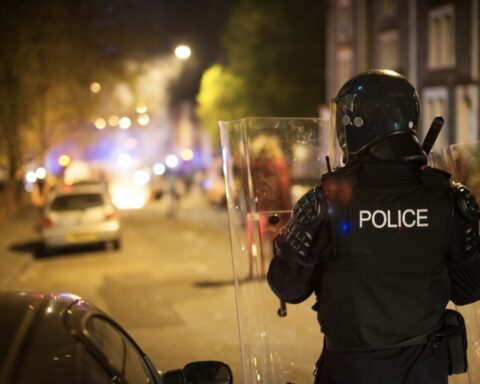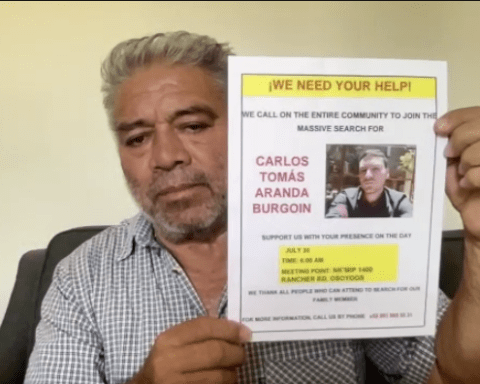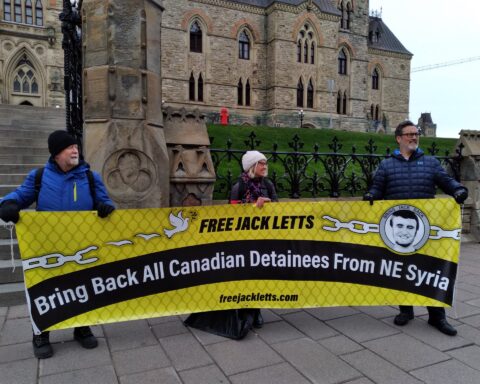The fight against terrorism is multi-faceted. As we are seeing in Mosul as I write, forces from a number of countries, including Canada, are heavily involved in an effort to take back Iraq’s second largest city from Islamic State.
Security intelligence agencies such as my former employer, Canadian Security Intelligence Service, CSIS, play a vital role in carrying out investigations both domestically and internationally to identify terrorists and help to disrupt their plans. And. of course. law enforcement bodies are there to do their own work and bring terrorists to justice.
When it comes to CVE – Countering Violent Extremism – however, it is far from clear that the actors just described are the only ones, or even the best ones, to do this work. It was my experience with the Citizen Engagement staff at Public Safety Canada that there is a role for government, but this role is best seen as a coordinating one and not one of control or direction.
Indeed, the Canadian government’s plans for an Office of the Coordinator for Counter Radicalization and Community Engagement reflects this notion. As for law enforcement and security intelligence partners, their involvement, while beneficial, has by definition to be limited since many people will not accept that their presence is NOT tied to intelligence gathering.
Start in communities
This entails then that there are other groups that need to get involved. The logical place to start is with the very same communities where radicalization to violence happens as it is those communities which are usually the first to see it develop and are often best-placed to reach out and make a difference to head the process off before it gets worse.
The U.S. government appears to be of this mind as it plans to launch a new program based on “local intervention teams” consisting of made up of mental health professionals, faith-based groups, educators and community leaders. Part of the impetus behind this announcement is the criticism levied against law enforcement efforts in the past.
So, how can communities help with CVE? As I already noted, they are the ones on the ground dealing with violent radicalization often before the CSIS’ and the RCMPs of this world arrive on the scene and they are the ones that have to deal with the aftermath of attacks by members of their neighbourhoods, whether in terms of shattered families or the inevitable backlash from greater society. They thus have a strong vested interest in doing something about this problem.
Some beyond repair
There are caveats, though. The people that governments choose to partner with have to be the real deal. It is far too easy, and in my experience far too common, for some individuals who claim to be “leaders” in their communities to be nothing of the sort. Choosing the wrong people can undermine what it is you are trying to achieve. There is also a need to develop mechanisms to evaluate the programs you are delivering. This is a difficult task and one that has yet to have received an adequate response.
Perhaps, most importantly, there has to be a recognition within communities that in some cases, hopefully rare ones, law enforcement and security intelligence have to be called in. Some people are beyond help and no amount of mentoring or counselling is going to get them to abandon terrorism. This small number of individuals remains a threat to national and public security and must be treated as such. Communities need to get past their distrust – or dislike – of CSIS and the RCMP.
CVE is therefore a multi-player effort with a strong local lead. Working together there is a good chance that some wayward souls can be diverted from the path to violent extremism. We owe it to ourselves to give it a shot.
Phil Gurski worked for more than three decades in Canadian intelligence, including 15 at Canadian Security Intelligence Service (CSIS), and is the author of the Threat from Within and the forthcoming Western Foreign Fighters (Rowan and Littlefield). He blogs at http://www.borealisthreatandrisk.com/blog/
Phil Gurski is a former terrorism analyst at the Canadian Security Intelligence Service (CSIS). He specializes in radicalization and homegrown Al Qaeda/Islamic State/Islamist-inspired extremism and has published several books, including the forthcoming When Religions Kill: how extremists justify violence through faith.” He is a member of New Canadian Media’s board of directors.





